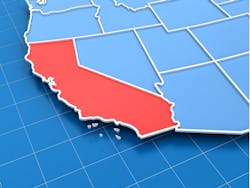California Judge Recommends Next Steps for Microgrid Tariffs
California took a significant step in its quest for microgrid tariffs yesterday with the release of a draft decision by Administrative Law Judge Colin Rizzo.
The judge’s recommendations represent the latest step in Track 2 of the California Public Utilities Commission’s move to commercialize microgrids, as laid out by state lawmakers in Senate Bill 1339.
With concern running high about electric reliability in the state, the proceeding (19-09-009) has drawn hundreds of comments and filings by microgrid companies, utilities, environmental groups, large energy users, and other interested parties since it was initiated in September 2019. California has struggled with multiple power outages related to utility shut-offs due to wildfire threats, as well as an unrelated grid blackout.
The 122-page draft lays out microgrid rates, tariffs, and rules for large investor owned utilities. The commission’s intent is to consolidate into a single tariff the various payment methods — such as net metering — that microgrids may employ. The microgrid tariff also acts as a “regulatory identity for microgrids” as the state creates policy, according to the draft.
In addition to requiring that utilities formulate microgrid tariffs, the proceeding takes on the ‘over-the-fence’ rule that prohibits microgrids from serving adjacent buildings separated by a street. The issue obstructs development of microgrids that serve multiple buildings that are not within the same property boundary.
The judge recommends doing away with the restriction for microgrids that serve critical facilities controlled by municipalities. The microgrid may be owned by a public or private party under the recommendation. Initially only 10 microgrids within a utility service territory would be able to exercise the right so that the utilities can test the approach.
The draft decision also makes several other recommendations, among them the creation by utilities of microgrid incentive programs. It also calls for pathways to evaluate and approve of low-cost, reliable electrical isolation methods. In addition, the judge recommends formation of a Resiliency and Microgrids Working Group work on microgrid policy issues.
The commission’s next meeting is January 14, which would be the earliest it may vote on the proposed decision.
The document is available on the commission website.
About the Author
Elisa Wood
Editor-in-Chief
Elisa Wood is the editor and founder of EnergyChangemakers.com. She is co-founder and former editor of Microgrid Knowledge.
